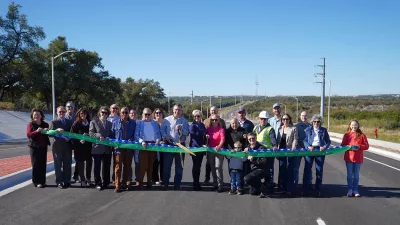The City of Austin is still working to address a growing number of vehicle and pedestrian crashes through its Vision Zero initiative — a lofty effort to bring the number of injury and fatality wrecks down to zero for the city. On Tuesday, the city released a two-year snapshot of those efforts covering both 2021 and 2022.
According to a city press release, key takeaways from the report include:
- Safety improvements work: Where Vision Zero safety engineering work has been implemented, safety has improved. Major Intersection Safety Projects resulted in a 31% reduction in serious injury or fatal crashes. Similarly, the South Pleasant Valley Road Project, completed in collaboration with the Bikeways bond program in 2021, is showing an 82% reduction in injury/fatal crashes of all modes.
- The work must continue: Consistent with national trends, injuries and fatalities in Austin over the past two years remain higher than pre-pandemic levels. Fatal crashes increased on State-owned roadways within Austin, while the number remained relatively flat on non-State-owned roadways. With over 600 people seriously injured or killed each year in Austin, the City acknowledges the need to scale up Vision Zero work to meet the level of the challenge.
- The core problem: Austin has a transportation system that historically was not designed to account for human mistakes and does not adequately mitigate the potential severity of crashes. Retrofitting this system for safer mobility is at the heart of Vision Zero.
Consistent with its focus on redesigning the transportation system for safer mobility, key accomplishments of Vision Zero in 2021 and 2022 include:
- Completing seven Major Intersection Safety Projects and initiating construction, design, or scoping on another 25 intersections.
- Installing low-cost, high-impact systemic projects at more than 40 locations.
- Lowering speed limits on nearly 50 arterial streets and hundreds of residential streets.
- Leveraging local community bond dollars to secure over $27 million in federal funds to rapidly increase the scale and scope of Vision Zero’s engineering work.





